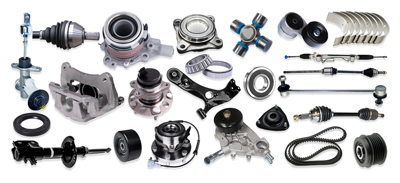In automotive engineering, the flywheel plays a critical role in ensuring the smooth operation of an engine by maintaining rotational inertia. As an engine’s output is not constant—due to the pulsating power produced by the combustion process—a flywheel smooths these power pulses and helps maintain a steady engine speed. However, there are two primary types of flywheels in use: the Standard Flywheel and the Dual Mass Flywheel (DMF). Although both serve the same basic purpose, they differ significantly in design and performance characteristics. This article will delve into the differences between the two, their construction, operation, benefits, and limitations.
Basic Concept and Functionality
Standard Flywheel:
A standard flywheel is a single-piece, heavy metal disc attached to the crankshaft of the engine. Its primary function is to store rotational energy and release it to smooth out the pulses from the engine’s power strokes. The standard flywheel serves to maintain engine momentum, particularly during the transitions between power cycles.
- Design: A single, solid mass of metal.
- Function: Stores and releases energy to reduce engine vibrations.
- Advantages: Simple, durable, cost-effective, and efficient for high-torque applications.
Dual Mass Flywheel (DMF):
The dual mass flywheel, as the name suggests, consists of two separate masses—one connected to the crankshaft and the other to the gearbox input shaft. These two masses are connected by a set of springs or dampers that allow them to move relative to one another. The DMF helps absorb and dampen vibrations and torsional forces that can be transmitted through the drivetrain.
- Design: Composed of two separate flywheel masses connected via springs or damping mechanisms.
- Function: Dampens vibrations and reduces noise, particularly in modern turbocharged and diesel engines.
- Advantages: Reduces engine vibration, improves comfort, and extends the lifespan of the clutch and transmission components.
Differences in Construction
Material and Design:
- Standard Flywheel: Typically made from cast iron or steel, designed as a single, heavy disc.
- Dual Mass Flywheel: Composed of two parts—a primary flywheel and a secondary mass. The primary mass is usually made from steel, while the secondary mass is often made from aluminum. The two masses are connected by springs or dampers to allow for movement relative to each other.
Vibration Dampening Mechanism:
- Standard Flywheel: Does not have any vibration dampening elements. It relies purely on its mass to absorb and smooth out engine pulses.
- Dual Mass Flywheel: Incorporates a complex spring-damper system between the two masses. This system isolates and absorbs torsional vibrations and dampens high-frequency vibrations, making it particularly beneficial for modern vehicles with high-torque engines.
Performance Differences
Vibration and Noise Reduction:
- Standard Flywheel: While it performs well in reducing large power pulses from the engine, it does not address the finer vibrations and torque fluctuations, especially at low engine speeds. This can result in more engine noise and vibration being transmitted to the vehicle cabin.
- Dual Mass Flywheel: Designed specifically to address high-frequency vibrations and low-speed torque fluctuations, the DMF provides a smoother driving experience. It is particularly beneficial in reducing cabin noise and improving ride comfort, especially in diesel and turbocharged engines.
Efficiency:
- Standard Flywheel: Due to its simpler design and lack of damping elements, the standard flywheel has a more direct energy transfer between the engine and the drivetrain. However, it may cause more stress on the clutch and transmission components due to the lack of damping.
- Dual Mass Flywheel: The added complexity of the springs or dampers can slightly reduce energy efficiency compared to the standard flywheel, as some energy is absorbed in the process of damping vibrations. However, this trade-off is typically considered acceptable for the improved comfort and longevity of the drivetrain components.
Flywheel Applications
Standard Flywheel:
- Commonly used in high-performance, racing, and heavy-duty applications where efficiency and high torque are prioritized over vibration damping.
- Often found in engines that produce high RPMs and where smoothness of power delivery is less of a concern.
Dual Mass Flywheel:
- Widely used in modern passenger cars, particularly in diesel and turbocharged engines, where reducing vibrations and improving ride quality is essential.
- Ideal for applications where the engine experiences a broad range of load conditions, such as city driving, where low-speed torque fluctuations are more prevalent.
Advantages
Advantages of a Standard Flywheel:
- Cost-effective: Standard flywheels are typically less expensive to produce and replace than dual mass flywheels.
- Durability: Fewer moving parts mean fewer components that can wear out over time.
- Simple Design: A straightforward design allows for easier maintenance and repair.
Advantages of a Dual Mass Flywheel:
- Reduced Vibration: The most significant advantage of the DMF is its ability to absorb and dampen vibrations, leading to a smoother, quieter driving experience.
- Improved Longevity: The DMF reduces stress on other components in the drivetrain, such as the clutch and gearbox, by reducing torsional forces.
- Better Comfort: Especially in modern vehicles with high-torque engines, the DMF provides a more comfortable ride, particularly at low speeds.
Durability and Maintenance Considerations
-
Standard Flywheel: While simple and durable, standard flywheels can wear out faster in high-stress conditions due to their inability to dampen torsional forces. This may lead to increased strain on the clutch system, reducing the lifespan of these components.
-
Dual Mass Flywheel: While more sophisticated and prone to failure due to the added complexity (especially in cases of extreme driving conditions), DMFs generally lead to longer service life for the clutch and gearbox. However, once the springs or dampers inside the DMF fail, it can lead to costly repairs or replacements.
Conclusion
In summary, the choice between a dual mass flywheel and a standard flywheel depends largely on the type of vehicle and the driving conditions. Standard flywheels excel in high-performance and heavy-duty applications where efficiency and torque are the primary concerns. On the other hand, dual mass flywheels provide superior vibration reduction and comfort, making them ideal for modern passenger vehicles, especially those with diesel or turbocharged engines.
While a standard flywheel is simpler, more cost-effective, and durable, the dual mass flywheel offers enhanced driving comfort and protection for the drivetrain components, particularly in city driving or stop-and-go traffic. However, the added complexity and cost of the DMF may not justify its use in all applications, especially in high-performance or racing environments where pure efficiency and torque transfer are paramount.

 Twitter
Twitter
 Facebook
Facebook
 Linkedin
Linkedin
 Google +
Google +



